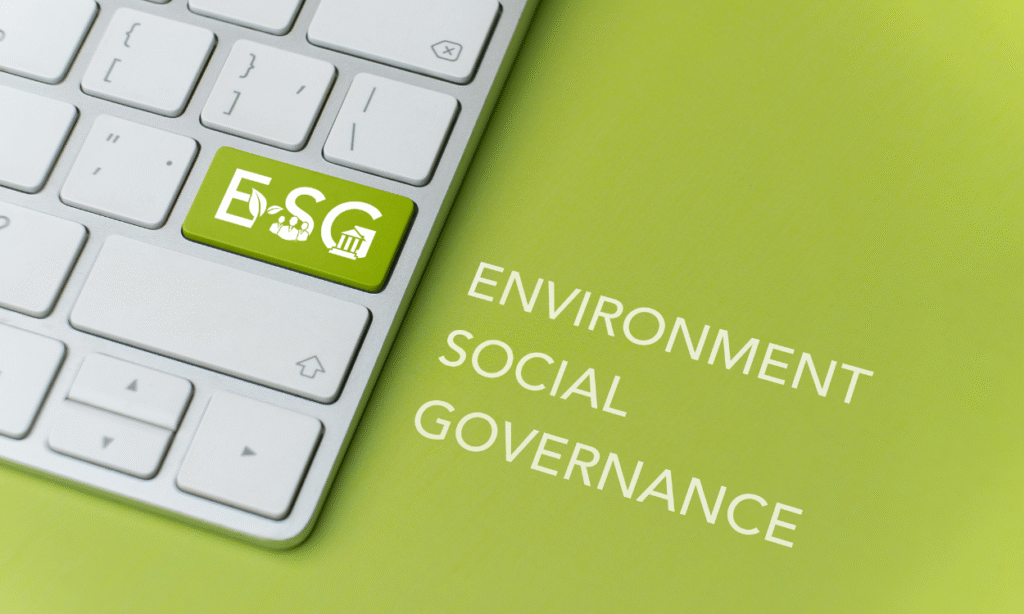
Small and medium-sized enterprises (SMEs) represent a significant portion of all businesses in both the European Union and the United States, highlighting their central role in these economies and their essential contributions to employment and innovation. A decade ago, only the most progressive businesses were concerned with sustainability and even considered it a niche approach, but this is no longer the case. A confluence of factors, including new regulations in the EU and the U.S., as well as shifting customer and investor expectations, has compelled most SMEs to enhance their sustainability know-how and endorse it as a mainstream priority.
However, many SMEs find it arduous to apply working sustainability practices. Usually, it is the CEO’s vision that serves as the main driver behind sustainability commitments for 33% of companies. This statistic shows leadership’s vital role in this transformational journey.
First things first. SMEs must understand sustainability and ESG through crucial stakeholder training before they can begin operating responsibly, reducing risks, and creating opportunities. Once companies absorb and get valuable information and insight, they can lay out clear sustainability strategies to attract dedicated investors and improve their customer loyalty. Smart sustainability frameworks lead to substantial savings through energy efficiency, waste reduction, and supply chain optimization. SME leaders looking to contribute to sustainable development should begin with available, targeted training programs that suit smaller operations.
There are many small companies that consider adopting eco-friendly practices, working responsibly, and cutting down environmental effects while also making positive social changes. This all sounds like an excellent approach for doing smart business, although they do not exactly know where to start and how. This is where sustainability training comes in: to prepare and compel companies of all sizes to recognize and embrace the value of balancing profits with environmental care and social responsibility.
Everyone in the corporate circles knows to this day that the epitome of sustainable business and one that lasts is when it protects the environment while remaining profitable. The ESG framework is the means to measure a company’s effect beyond just financial results.
Most small business owners believe sustainability matters to their business, yet only a few of them might bother to set any targets. Decarbonization strategy is not even an issue. This instance shows the knowledge gap that sustainability training still has to fill.
The UK, for example, needs its 5.5 million small businesses and self-employed people to reach its 2050 net zero target. However, they don’t know their carbon emissions, and sustainability is more of a puzzle.
Nevertheless, adopting sustainable practices brings multiple benefits for small businesses. First and foremost, it can boost a business’s bottom line by increasing productivity and cutting expenses. For instance, turning office heating down by just 1°C can reduce heating bills by up to 8% annually.
Beyond cost savings, sustainability is also closely linked to enhanced brand reputation and attracting top talent. According to research by McKinsey Health Institute in collaboration with the World Economic Forum, investing in employee health and well-being can unlock as much as $11.7 trillion in global economic value by boosting productivity, cutting absenteeism and healthcare costs, and strengthening engagement and retention—while also enhancing an organization’s ability to meet regulatory and ESG demands.
However, barriers exist, and for small businesses, costs are usually the main one. For example, when small businesses attempt to reduce carbon emissions, they often encounter limited information on the topic, in addition to financial constraints that hinder their ability to achieve net zero. These challenges underscore the necessity of accessible sustainability training tailored specifically for SMEs.

SMEs, making up the majority of businesses globally, hold a unique position in driving sustainable development. Although individually small, their collective impact can be substantial.
Here are some meaningful ways for SMEs to contribute to sustainable development goals:
Firstly, they can lessen their environmental impact by implementing energy efficiency and waste reduction measures. Additionally, many SMEs are more likely to pursue innovative solutions to sustainability challenges due to their agility and responsiveness to market needs. They can also promote social sustainability by implementing fair labor practices, creating quality jobs, and supporting local communities. As a result, they directly impact Goal 8 (decent work and economic growth) and indirectly contribute to Goal 1 (ending poverty). It is the intention that has to settle in, with sustainability practices that do not necessarily require extravagant dedicated resources, e.g., financing or time.
Your business needs a clear picture of its current position before starting any sustainability initiatives. A full picture will help you define where you stand and the best steps to move forward.
Start with a baseline check of your company’s sustainability performance. Look at your existing practices in environmental, social, and governance areas. An environmental assessment includes evaluating energy consumption, waste generation, water usage, and the carbon footprint from transportation.
Look at your employee policies, community involvement, and supply chain practices for social aspects. Your governance structures need review to support clear decision-making and ethical business conduct.
ESG maturity of small businesses varies across different areas. You might excel with community work but need support with formal environmental policies. This uneven growth points the way to future training needs.
After setting your baseline, you need to spot specific knowledge and skills gaps in your organization. This evaluation should cover all departments, including both leaders and staff.
Ask your employees what they know about sustainability and how comfortable they feel with ESG concepts. Companies of all sizes often find substantial differences in understanding between departments. Technical teams might understand environmental concepts but lack knowledge about social responsibility metrics.
Compare required skills for your sustainability goals against existing capabilities. Small and medium businesses often locate knowledge gaps in:
Sustainability training is not one-size-fits-all. Leadership teams might need strategic planning skills, while front-line employees might require practical implementation guidance, defining the content of training provided to each team.
Knowing your position and shortcomings focuses training accordingly. This approach enables sustainability work in supporting core business goals.
What is your current market position, and what do your customers really expect? Perhaps the industry should shift its attention to environmental training if it values green credentials. Should the industry aim to enter markets with stringent ESG regulations, it would be beneficial to tailor training to meet those specific requirements.
Financial matters usually determine final choices. For resource-constrained SMEs, starting with training that promises near-term cost savings creates momentum for broader initiatives.
Build a thoughtful training plan that considers various factors.
This prioritization exercise ensures a sustainability training investment delivers maximum impact for specific business contexts and goals. The most successful SMEs align sustainability training with their unique market position rather than adopting generic approaches.
A well-laid-out sustainability training plan serves as the lifeblood of successful ESG implementation for small and medium enterprises.
Efficient training happens when goals are well-defined. Communicate any training objectives so that they directly support the broader sustainability strategy. This connection provides a meaningful boost to the company’s sustainability journey. A few of the key elements to consider while setting training goals are to ensure that the sustainability training aligns with your organization’s broader strategy and mission while supporting existing sustainability goals. Tailor the training to specific roles by identifying the ESG knowledge and skills needed at every level and establishing clear, measurable outcomes, like improved awareness, enhanced ESG metrics, or stronger stakeholder engagement.
Note that the training goals should help merge sustainability into everyday business operations. This integration means ESG considerations become part of a company’s decision-making DNA rather than isolated initiatives.
After establishing clear goals, determine who requires training and what content will be most valuable. Practically speaking, different roles within your organization will need varying levels and types of sustainability education.
Complete training programs should include ESG frameworks and reporting, climate change basics and relevant policies, carbon footprint measuring, and renewable technologies.
Beyond financial considerations, establish a dedicated training budget and timeline that accounts for both immediate needs and long-term capability building. Throughout this process, keep in mind that employee engagement is critical—sustainability training works best when every employee understands its relevance to their roles and the company’s future.
Following a structured sustainability training plan, an SME can then build the internal capacity needed to implement effective ESG initiatives that support business growth.
ESG training programs should target sustainability areas that are most impactful to small business operations. Focusing on targeted topics ensures that training resources deliver maximum value for your investment.

Comprehensive environmental training primarily focuses on carbon footprinting and measuring greenhouse gas emissions across Scopes 1, 2, and 3. This foundational knowledge helps SMEs understand their environmental impact and establish baselines for improvement. Many small businesses find that measuring carbon footprint provides clear insights into cost-saving opportunities.
Energy efficiency training deserves special attention as it delivers immediate business benefits.
Due diligence processes for managing human rights are critical for SMEs seeking competitive advantage and resilience. Beyond traditional demographics, effective programs cover inclusive recruitment, workplace accommodations, and creating psychologically safe environments.
Human rights training addresses ethical labor practices, supplier management, and modern slavery prevention. This training is increasingly important as consumers scrutinize supply chains for ethical standards.
Trainings that target risk management cover ESG-related risk identification, mitigation strategies, and contingency planning. Essential elements include developing risk registers and implementing compliance controls tailored to small business contexts.
Transparency training focuses on stakeholder communication and reporting frameworks. This helps SMEs demonstrate accountability to customers, investors, and community partners. Training on whistleblowing systems and breach documentation supports governance efforts by creating proper feedback channels.
To achieve lasting impacts, it is now imperative that sustainability flow through the entire organization instead of being treated as a separate action. ESG thinking should be incorporated into daily decision-making processes.
Leadership plays the most active role in exhibiting real commitment and clear communication. A smart tactic would be to assign the company’s business analysts to also handle ESG analysis , avoiding duplication of efforts.
Position descriptions should reflect sustainability values, and ESG KPIs should be part of every manager’s performance review. This signals that sustainability is an integral element of everyone’s job, not merely an optional add-on.
Conclusion
The current marketplace is both conscious and quickly evolving. SMEs seeking resilience and positive impact must strategically integrate sustainable practices, even if they raise concerns.
A well-laid-out ESG education is a worthy investment and can act as a catalyst for environmental responsibility and business growth. Without a doubt, businesses now see a clearer link between eco-friendly practices and financial success—from lower operational expenses to enhanced customer loyalty and investor appeal.
Small companies most often face financial hurdles in implementing sustainability, yet their combined impact can be considerable. Their journey begins with an honest assessment of current practices and focused training to address any competence limitations. When they set clear goals, they can then choose appropriate training methods and focus on ESG issues that matter the most to their operations.
However, the effectiveness of training depends on its proper implementation and measurement. Employee engagement, consistent tracking of ESG KPIs, and a true integration of sustainability principles into organizational culture are all critical to success.
